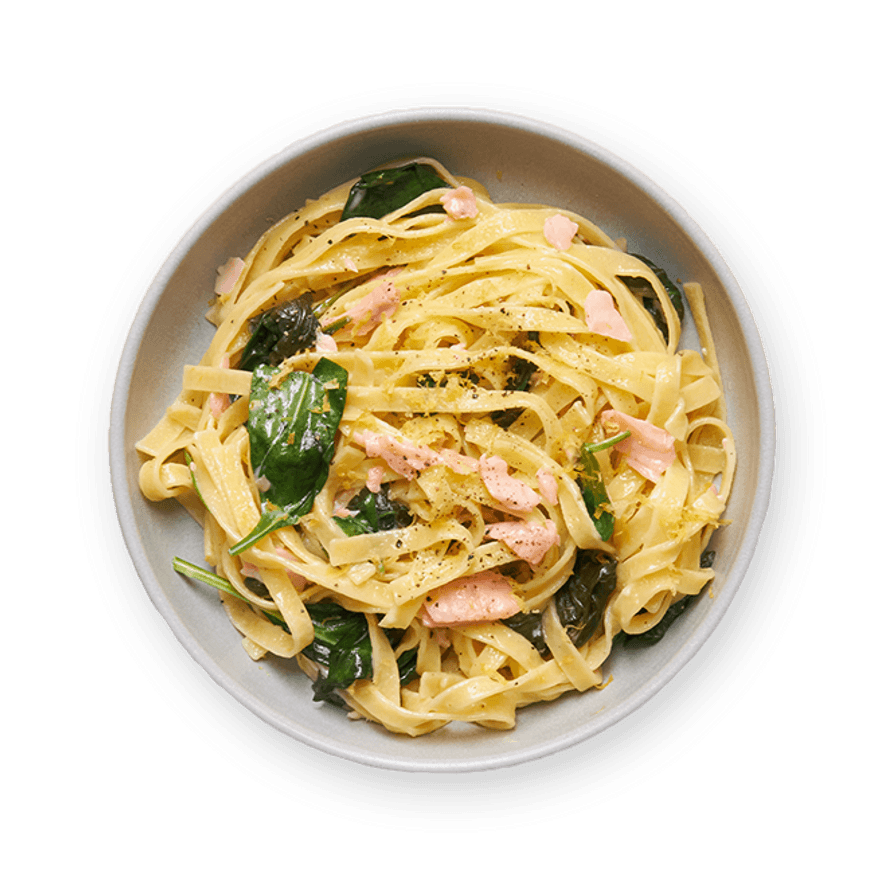Ingredients
Utensils
Stovetop, Pot (small), Colander
recipe

Step 1
Cut the smoked salmon slices into pieces.

Step 2
In a pot of salted boiling water, cook the pasta according to package instructions. Towards the end of cooking, reserve a small ladle of cooking water & drain the pasta.



Step 3
In a hot pan, add the cream, reserved pasta water, lemon juice & spinach*. Mix & cook for an extra 1-2 min, on medium heat. Season with salt & pepper. *Check out our tips for this step
Step 4
Add the drained pasta to the pan along with the smoked salmon pieces. Zest the lemon on top & stir to combine.
Step 5
Serve the salmon tagliatelle in a bowl or plate & re-season to taste. Enjoy !
For a truly flavoursome dish, we suggest swapping out the crème fraîche for boursin cheese or adding dried dill or basil to the sauce.
Un client astucieux
Personal notes
Add your own flavor!
Nutrition facts
Average estimated amount for one serving
| Energy | 568 cal. |
| Fat | 18 g |
| Carbohydrates | 68 g |
| Protein | 29 g |
| Fiber | 5 g |
Values are based on an average estimate for one serving. All nutrition information presented on Jow is intended for informational purposes only. If you have any concerns or questions about your health, please consult with a health-care professional.
On average, one serving of the recipe "Salmon & Spinach Tagliatelle" contains 568 Energy, 18 g of Fat, 68 g of Carbohydrates, 29 g of Protein, 5 g of Fiber.
Price per portion
| € | Nos recettes à -2 € par portion |
| €€ | Nos recettes entre 2 € et 4 € par portion |
| €€€ | Nos recettes à +4 € par portion |
Please note, the price above is dependent on your grocer and the available products in the grocery store you chose.
Scores


C Nutri-score
The Nutri-score is an indicator intended for understanding nutritional information. Recipes or products are classified from A to E according to their food composition to promote (fiber, proteins, fruits, vegetables, legumes, etc.) and foods to limit (energy, saturated fatty acids, sugars, salt, etc.).
C Green-score
The Green-score is an indicator representing the environmental impact of food products. The recipes or products are classified from A+ to F. It takes into account several factors on the pollution of air, water, oceans, soil, as well as the impacts on the biosphere. These impacts are studied throughout the product life cycle.
Retrieving reviews...



